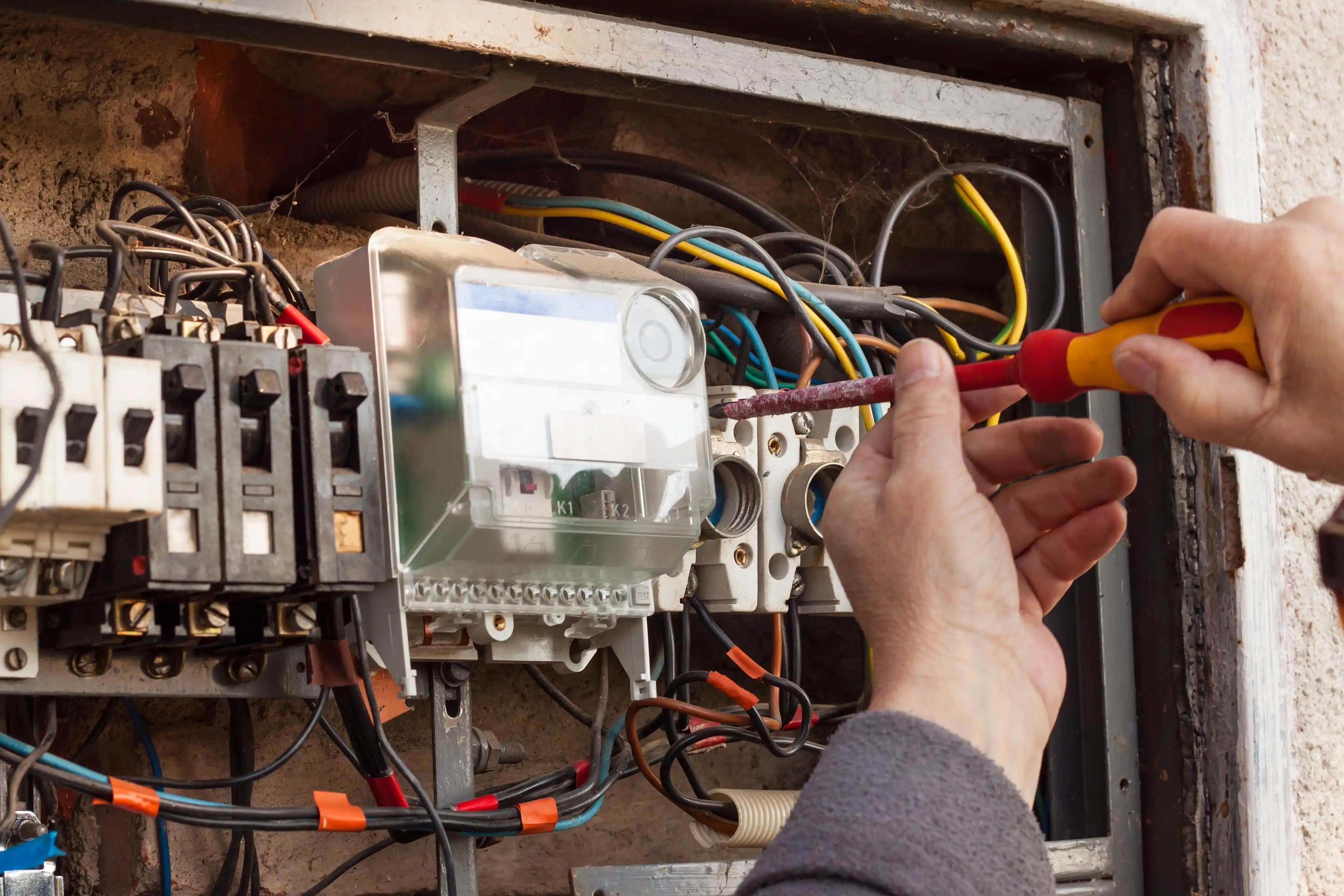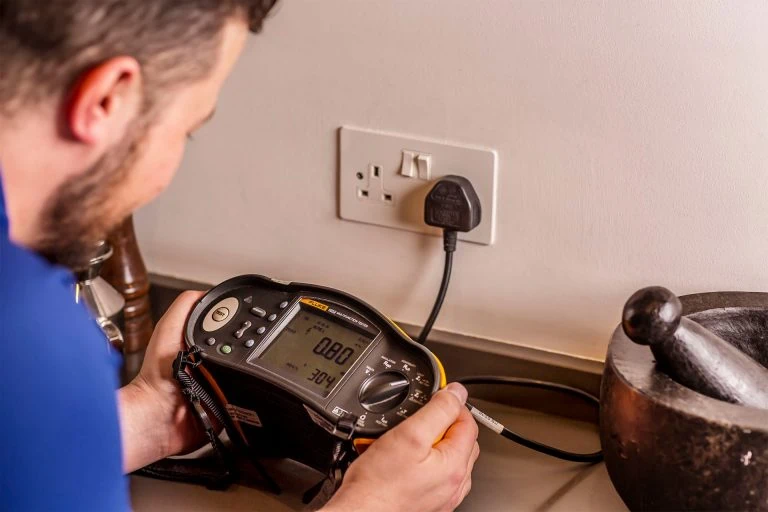Usual Electrical Problems Every Property Owner Should Learn about
House owners frequently encounter various electric troubles that can influence security and performance. Concerns like flickering lights and stumbled circuit breakers are a lot more usual than lots of recognize. These circumstances can suggest much deeper electric worries that warrant focus. Recognizing the indications and threats connected with obsolete circuitry and dead electrical outlets is important. What measures can be taken to avoid these troubles? Discovering these usual electric concerns might expose crucial understandings for preserving a secure home environment.

Flickering Lights: Reasons and Solutions
Why do some home owners experience flickering lights? Flickering lights can be a typical annoyance, commonly indicating underlying electric concerns. One primary reason is loose or damaged connections within lighting fixtures or circuitry, which can lead to recurring power supply. Furthermore, making use of high-wattage devices on the very same circuit might trigger voltage variations, causing dimming or flickering. Another possible issue is an overloaded circuit, where a lot of gadgets draw power all at once, stressing the electrical system. Abject or obsolete circuitry can add to irregular electrical flow. Sometimes, flickering lights may indicate an issue with the home's electric panel or solution line. Property owners must resolve flickering lights promptly to avoid possible threats. Solutions might consist of tightening up links, redistributing home appliance load, or getting in touch with a certified electrician for a complete evaluation. Determining the root cause can help guarantee a secure and risk-free electrical system in the home.
Tripped Circuit Breakers: What You Need to Know
Have homeowners ever before questioned what causes their circuit breakers to trip all of a sudden? This typical problem commonly develops from an overload of electrical circuits, where a lot of gadgets draw power concurrently. In such situations, the breaker works as a safety device, disrupting the circulation of power to protect against getting too hot and potential dangers. Another constant cause is a brief circuit, which occurs when a real-time wire get in touches with a neutral wire, developing a rise of power that trips the breaker. Ground mistakes can likewise result in stumbled breakers; these occur when an online cable touches the ground or a based surface, posing serious security risks. Home owners ought to on a regular basis assess their use of high-wattage appliances to avoid straining circuits. Furthermore, comprehending the feature of circuit breakers can assist them react properly throughout a trip, guaranteeing their home stays properly maintained and risk-free.
Obsolete Circuitry: Indicators and Threats
Out-of-date circuitry can posture significant threats to property owners, frequently going undetected until problems occur. Homes constructed before the 1980s may still have aluminum circuitry or knob-and-tube systems, which are no more taken into consideration secure. Indications of obsolete electrical wiring include flickering lights, regularly tripped circuit breakers, or burning smells near outlets. These indicators may suggest that the electric system is overloaded or deteriorating.Additionally, home owners might notice burn marks around buttons or electrical outlets, which can suggest getting too hot. The threat of electrical fires significantly raises with obsolete electrical wiring, as these systems were not made to handle contemporary electric loads. Home owners are encouraged to have their wiring checked routinely, especially when renovating or including brand-new devices. By recognizing these indicators early, they can avoid harmful circumstances and preserve a more secure living environment. Updating to existing electrical criteria is a proactive step in preserving home security and efficiency.
Often Blown Fuses: Fixing Tips
Constant blown integrates can indicate underlying electric concerns that might stem from outdated circuitry or overloaded circuits. Home owners experiencing this issue ought to first identify the home appliances connected to the affected circuit. It is advisable to avoid utilizing multiple high-wattage gadgets concurrently, as this can bring about circuit overload. If the problem lingers, checking the circuit box for signs of wear or damages is vital; a malfunctioning fuse box may require replacement.Additionally, looking for loose links within the circuit can assist protect against future incidents. Property owners must likewise validate that the fuses being utilized are of the appropriate amperage, as making use of an inaccurate fuse can worsen the trouble. Getting in touch with an accredited electrical expert is advised to assess the electrical system even more if these fixing pointers do not solve the concern. Attending to these problems promptly can help alleviate threats and assure the security of the home's electric framework.
Dead Outlets: Typical Causes and Solutions
When a home owner encounters a dead electrical outlet, it can frequently be a resource of stress and confusion. Several usual causes may cause this issue. One frequent culprit is a stumbled breaker, which can be quickly reset. If any type of breakers are in the off setting, property owners ought to examine their electrical panel to inspect. One more possibility is a malfunctioning outlet itself, which might need replacement. Additionally, loose circuitry connections within the electrical outlet can interfere with power circulation, making assessment essential.Sometimes, the trouble may stem from an overloaded circuit, especially when multiple tools are attached. In such situations, rearranging the electric tons can resolve the problem. Homeowners need to likewise take into consideration the age of their electrical wiring; older systems might need updates to satisfy modern-day electrical demands. If these actions do not remedy the situation, getting in touch with an accredited electrician is recommended to assure safety and security and appropriate diagnosis.
Electrical Shocks: When to Be Concerned
Just how can homeowners figure out whether an electric shock warrants concern? Homeowners ought to initially examine the severity and context of the shock. A moderate static shock, often felt when touching steel objects, is normally safe and common. If the shock takes place while communicating with a plugged-in home appliance or outlet, it may show an extra significant issue.The location and regularity of the shocks are crucial. Repetitive shocks Look At This from the very same resource, specifically in damp areas like washrooms or cooking areas, can signal defective circuitry or poor grounding. Property owners must likewise consider the experience of the shock; a shock that creates discomfort or contraction is more worrying than a simple tingle.If there's any unpredictability, it is recommended to seek advice from a qualified electrician. Overlooking possible electric dangers can lead to serious safety risks, including fire or extreme injury.
Overloaded Circuits: Avoidance and Precaution
Overloaded circuits position significant risks in household setups, commonly causing electric fires or tools damages (Sydney Level 2 Electrician). Property owners have to acknowledge the indications of an overloaded circuit, such as regularly tripped breakers or dimming lights. Applying preventative security practices can assist mitigate these risks and guarantee a much safer living atmosphere
Acknowledging Overloaded Circuits
What indications suggest hop over to these guys that a circuit may be strained? Home owners ought to be attentive for several vital signs. Frequently stumbled circuit breakers or blown integrates recommend excessive lots on the circuit. Lowering or flickering lights, particularly when various other home appliances are in usage, can signify an insufficient power supply. In addition, outlets or buttons that feel cozy to the touch might indicate overheating, a potential fire danger. Unusual humming sounds from outlets also require focus, as they can represent electric concerns. Ultimately, if home appliances operate inefficiently click to find out more or fail to start, it may suggest an overloaded circuit. Identifying these indications early can aid stop significant electrical issues and advertise a more secure home atmosphere.
Preventive Safety And Security Practices
To keep a effective and risk-free electrical system, house owners have to implement preventative safety methods that attend to possible circuit overloads. One effective procedure is to prevent linking way too many tools to a solitary electrical outlet, as this can surpass the circuit's capability. Making use of power strips with integrated breaker can help disperse power safely. Homeowners ought to additionally on a regular basis evaluate cables and devices for damages and replace any kind of defective devices promptly. It is essential to ensure that circuit breakers are working correctly and to be knowledgeable about the complete wattage being utilized in each circuit. Additionally, speaking with a qualified electrical expert for routine evaluations can determine potential concerns before they escalate, ensuring a safer living setting and lengthening the lifespan of electric systems.
Regularly Asked Questions
Exactly how Usually Should I Have My Electrical System Inspected?
Regular assessments of electrical systems are suggested every 3 to 5 years. Homeowners need to consider extra constant checks if they experience concerns, take on improvements, or stay in older residential properties to ensure safety and compliance.
Can I Deal With Electrical Issues Myself or Hire a Professional?

What Are the Indicators of an Electrical Fire Danger?
Signs of an electrical fire threat consist of regularly tripped circuit breakers, flickering lights, melting smells, blemished electrical outlets, or warm, buzzing cords. Homeowners must continue to be alert and look for specialist help if any one of these indicators are present.
Exactly how Do I Know if My Home Demands an Electrical Upgrade?
To establish if a home requires an electric upgrade, indicators consist of frequent circuit breaker trips, outdated wiring, not enough electrical outlets, flickering lights, and the visibility of older electric panels, suggesting possible safety and security hazards and inefficiency.
Exist Details Safety And Security Tips for Do It Yourself Electrical Work?
When thinking about do it yourself electric job, one must constantly turn off power, utilize protected devices, validate circuit capability, follow regional codes, and get in touch with experts for complicated tasks to assure safety and security and protect against crashes. One more potential issue is an overloaded circuit, where also several gadgets attract power simultaneously, straining the electrical system. The danger of electrical fires substantially increases with outdated wiring, as these systems were not developed to take care of modern-day electric loads. Constant blown merges can suggest underlying electric issues that may stem from obsolete wiring or overloaded circuits. To preserve a reliable and risk-free electric system, house owners have to implement preventative security methods that resolve prospective circuit overloads. Level 2 Electrician. Indicators of an electrical fire threat consist of frequently tripped circuit breakers, flickering lights, melting odors, tarnished outlets, or warm, humming cables